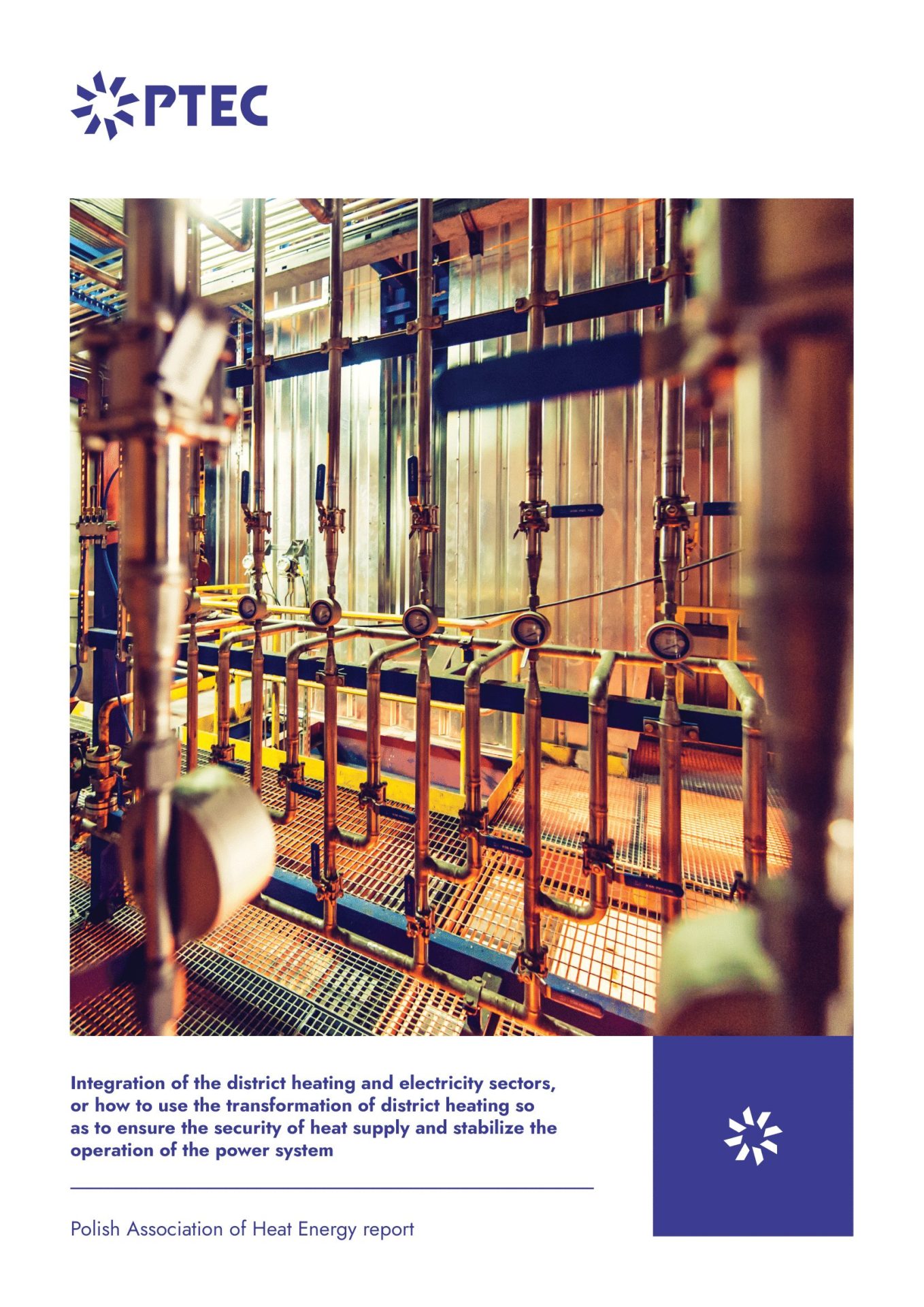Dear Sirs,
We have devoted this year’s report of the Polish Association of Heat Energy entirely to the integration of the electricity sector with the district heating sector (“sector coupling”). This is an issue of great importance in the context of the power gap forecast by the Polish Power Grid Company (PSE) in the coming years, the temporary surplus of electricity production in the National Power System (NPS) and the direction of the transformation of district heating.
Meeting the requirements of the EU’s “Fit for 55” package requires the district heating sector to take a new approach to doing business and to identify possible areas of cooperation with the electricity sector. The key factors include, among other things, cogeneration – that is, the simultaneous production of electricity and heat – and Power-to-Heat technologies, which allow surplus energy from RES in the NPS to be used to produce heat. Such solutions contribute to a deeper integration of sectors, thereby enhancing Poland’s energy security, improving fuel utilization efficiency and primary energy conversion efficiency, while reducing greenhouse gas emissions. This is also a viable scenario for achieving climate neutrality by 2050.
The undoubted advantage of sector coupling is that the technologies such as gas cogeneration, heat pumps, electric boilers, heat storage and intelligent demand management systems are available already today. These technologies are the foundation for building a stable energy supply and affordable district heating prices in the coming decades.
According to Polish Association of Heat Energy expert analyses presented in the report, the variable cost of heat generation with optimal operation of CHP units and electric heat sources is PLN 30/GJ. For the coal-based scenario, the value was 16% higher, while in the scenario without CHP it was as much as 143% higher. These results indicate the need to diversify generation sources and operate them in line with market signals.
However, in order to able to implement the sector integration scenario presented in this report, suitable regulatory changes are needed. It should also be kept in mind that full integration of markets will only be possible with broad access to financial instruments and aid mechanisms to suport decarbonization investments, the value of which – according to Polish Association of Heat Energy estimates – could amount to PLN 299–466 billion by 2050, depending on the adopted scenario.
Treating sector coupling as both an opportunity and a challenge for the district heating sector, I hope that the conclusions and recommendations contained in this report will become the basis for a lively discussion on the new energy market model.
I wish you an interesting reading!
Dariusz Marzec
President of the Management Board
Polish Association of Heat Energy
